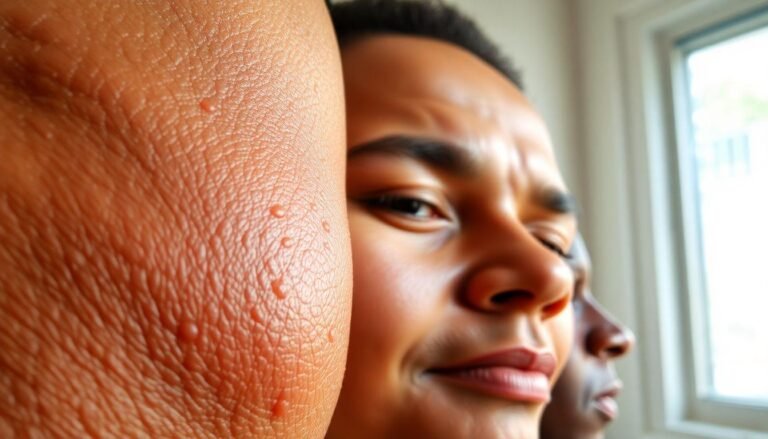Our skin often serves as a mirror, reflecting both our health and potential concerns that might need attention. When unusual symptoms appear, it’s natural to feel concerned or confused. Having access to reliable visual references can be incredibly reassuring when trying to identify skin conditions and understand what might be happening beneath the surface. This guide aims to help you navigate common dermatological issues with clarity and confidence, empowering you to recognize when self-care is sufficient and when it’s time to consult a healthcare professional.
Why Visual Identification Matters for Skin Health
Our skin is our largest organ and often the first line of defense against environmental threats. When something goes wrong, visible symptoms typically emerge, ranging from mild redness to more concerning changes in texture or color. Being able to visually identify these changes isn’t just about satisfying curiosity—it’s about health literacy and proactive care.
Visual identification helps you:
Remember that while pictures are helpful guides, they’re not substitutes for professional medical diagnosis. Your unique combination of symptoms, medical history, and skin type will always require personalized assessment.
Common Skin Conditions and Their Visual Characteristics
Acne: Beyond Just “Breakouts”
Acne is perhaps the most recognized skin condition, affecting nearly 85% of people at some point in their lives. Yet many don’t realize acne comes in various forms, each with distinct visual characteristics:
Whiteheads appear as small, flesh-colored bumps with white centers.
Blackheads show up as small, dark spots that may look like dirt but are actually oxidized oil.
Papules present as small, tender red bumps without visible pus.
Pustules are what most people think of as “zits”—red bumps with white or yellow pus-filled centers.
Cystic acne manifests as painful, deep bumps beneath the skin’s surface.
What makes acne tricky? The same person might experience multiple types simultaneously, and treatments vary based on the specific manifestation.
Eczema: The Red, Itchy Mystery
Eczema (atopic dermatitis) affects more than 31 million Americans, yet it’s often mistaken for other conditions. Visually, eczema typically appears as:
Unlike some rashes that stay put, eczema loves to travel—appearing on your hands one week and behind your knees the next. The intense itchiness that accompanies these patches is often the most telling symptom.
Psoriasis: When Skin Cells Multiply Too Quickly
Psoriasis creates distinctive visual patterns that help differentiate it from other red, scaly conditions. Look for:
Clearly defined, thick red patches covered with silvery-white scales
Symmetrical distribution (often appearing in the same location on both sides of the body)
Common locations include elbows, knees, scalp, and lower back
Nail changes like pitting, discoloration, or separation from the nail bed
The scales of psoriasis result from skin cells multiplying up to 10 times faster than normal, building up on the surface instead of shedding properly.
Rosacea: More Than Just Blushing
Rosacea often begins with a tendency to blush easily, but progresses to more persistent symptoms:
In advanced cases, rhinophyma may develop—a thickening of the skin on the nose that creates a bulbous appearance, more commonly in men than women.
When to Seek Professional Help
While visual identification is helpful, certain symptoms warrant prompt medical attention regardless of your best guess at diagnosis:
Healthcare providers have training and tools beyond visual inspection, including dermatoscopes that magnify skin features, laboratory tests, and when necessary, skin biopsies to confirm diagnoses.
Beyond Pictures: Contextual Clues for Skin Diagnosis
While pictures provide valuable reference points, accurate identification often requires additional context:
Timing: When did symptoms first appear? Are they constant or do they come and go?
Triggers: Do certain foods, products, or environments make symptoms worse?
Sensation: Is the affected area itchy, painful, burning, or numb?
Distribution: Is the condition localized or widespread? Symmetrical or asymmetrical?
These details, combined with visual characteristics, create a more complete picture for both self-assessment and professional diagnosis.
Conclusion
Understanding skin conditions through visual identification empowers you to take charge of your dermatological health. Remember that our skin is incredibly complex—what works for one person may not work for another, and what looks like one condition might actually be something else entirely. Use visual references as helpful guides, but always consult healthcare professionals for persistent or concerning symptoms. By combining observant self-monitoring with professional guidance, you’ll be well-equipped to maintain healthy, radiant skin throughout your life. The journey to understanding your skin conditions is ongoing, but with the right resources and knowledge, you can navigate it with confidence.







